After nearly two years, an ongoing project to move and cover our over sized outdoor collections is nearly complete! I’m excited to share the incredible transformation and thank all of the people who made this project possible.
Hannah posted a blog at the start of the project in August 2018 talking about moving objects from outdoor storage into our former boat building shed. Moving objects inside slows their deterioration rate, which delays the need for active conservation treatment. Space is always at a premium in museums, and because these objects are over sized and fairly robust, they were stored outside for most of their lives. In an effort to improve their situation, we decided to repurpose the boat shed. In preparation for the move, Hudgins Contracting removed the loose gravel and resurfaced the floor for us so that the objects would have an even, compact surface to rest on.
Phase I: moving the “small” stuff
The move began in July 2018 with our staff relocating over 100 objects into the shed using our forklift and muscles.
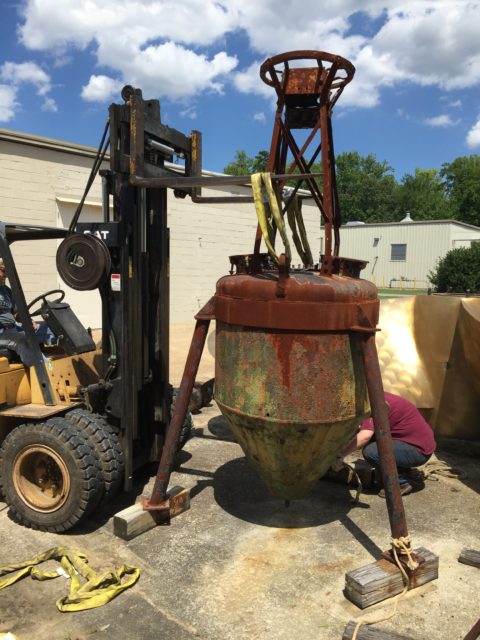
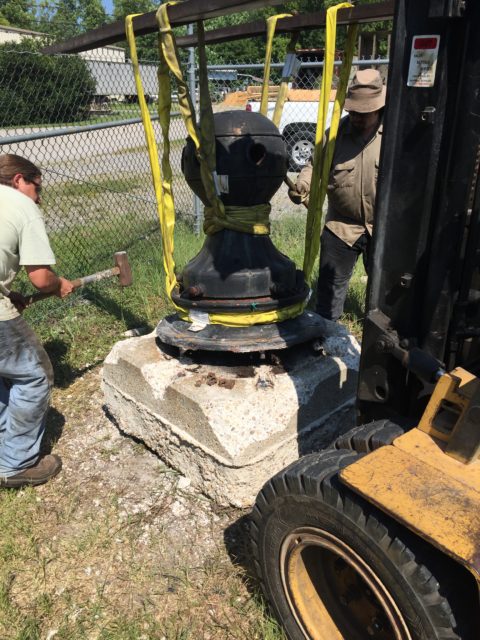
Phase II: giant Tetris
After we ran out of the “small” things, we enlisted some outside help to move our largest items. Hampton Roads Crane and Rigging donated 2 days of their services to assist with our more difficult objects.
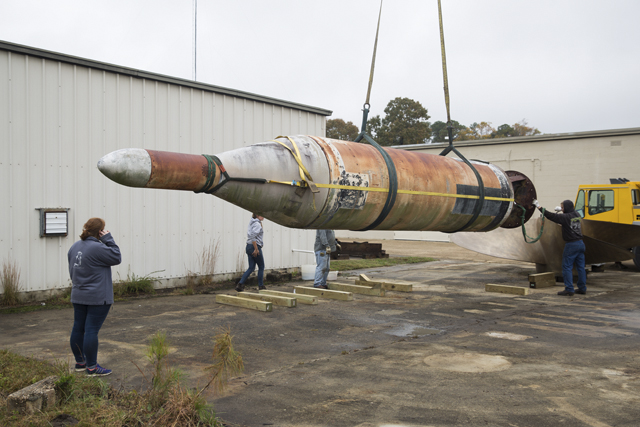
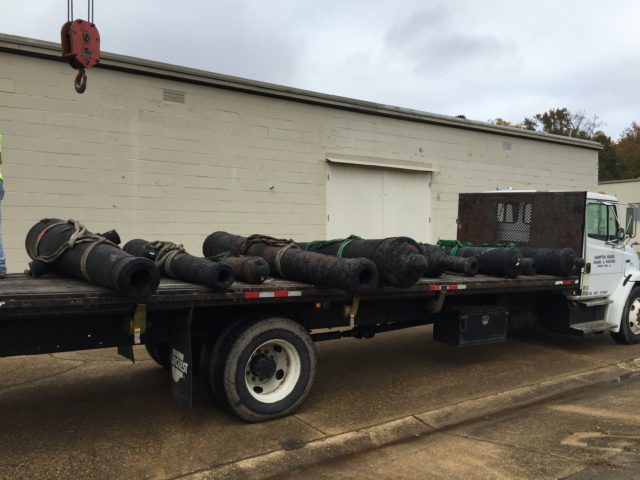
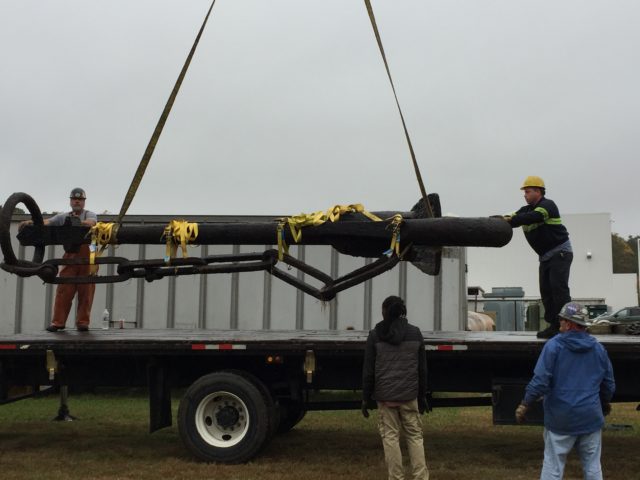
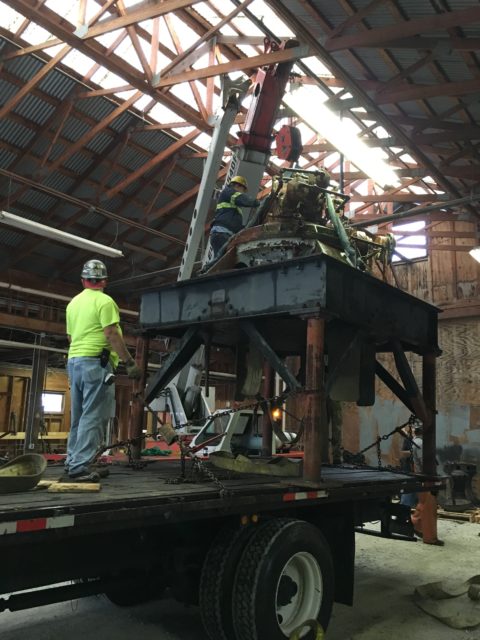
All told, we relocated 148 items into the boat shed. The remainder is organized in neat rows on a single concrete pad. The objects are now raised off the ground and physically supported on new blocks. Look how beautiful everyone looks!
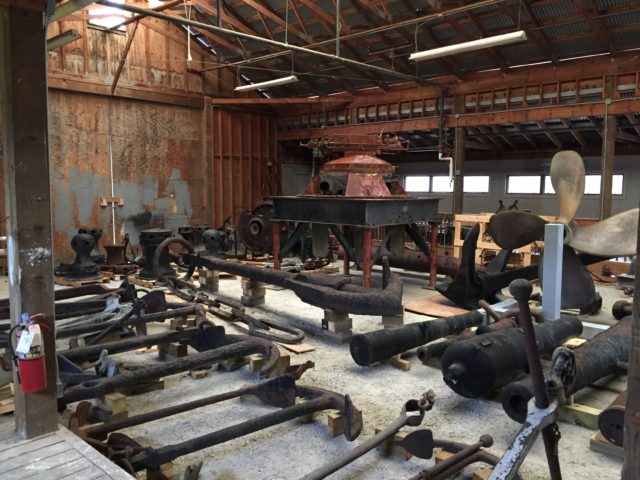
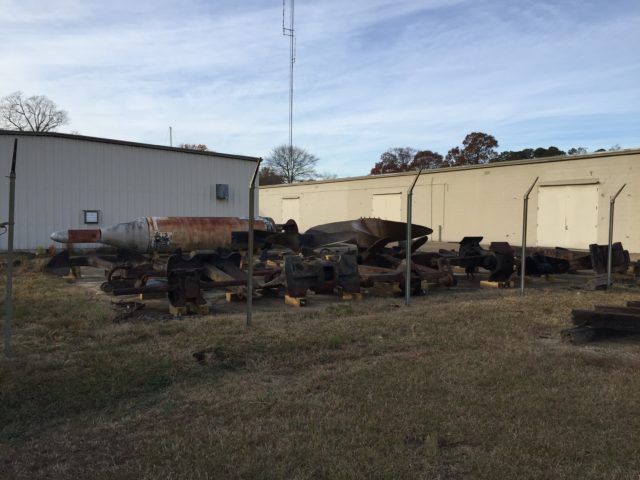
Phase III: covering the rest
The next summer, in 2019, we focused on covering the objects still outside. Tarps were used to protect the objects on the concrete pad from the elements, including rain and sunlight. One of the few objects which we didn’t move is a steam turbine rotor. It is on a custom support underneath a car port. Our facilities team patched holes and added sides to protect the turbine from rain and snow. Eventually all of the objects will need a permanent home inside a climate-controlled space, but the steps we’re taking now reduces their deterioration and makes that transition inside easier.
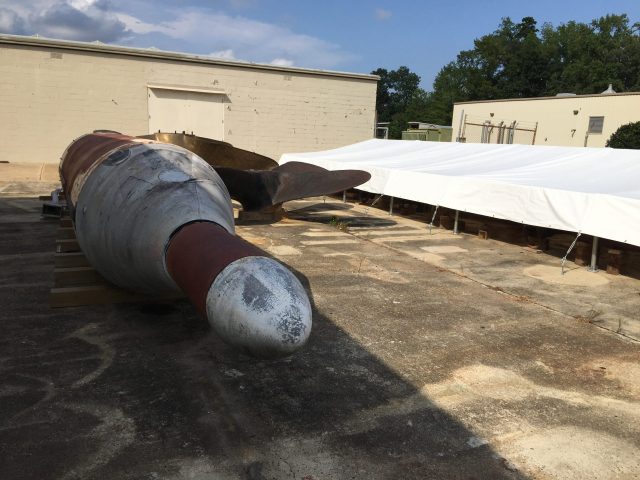
Phase IV: Last but not least…
The final goal for this project focuses on a Japanese midget submarine. We did not include it in the earlier reorganization due to its size; a whopping 35 feet long and 22 tons. Last October, Hannah presented to the Bronze Door Society, the museum’s donor society, about the need to manufacture a custom cradle to support the submarine’s hull and raise it off of the ground. The Society awarded the proposal the necessary funding, and the project is currently underway. This is a major step towards stabilizing the vessel and will make future movement and treatment of the object much easier. Stay tuned for another blog post about this fascinating object and the results of this project!
Collective Stewardship
This project gets right at the heart of our mission “…through our shared maritime heritage—we are connected to one another.” By our collective stewardship we are able to preserve and share that heritage. All of this would not have been possible with out the collaboration between museum departments and the generosity of the local community.
The move was not possible without two organizations donating their time and services. Hudgins Contracting resurfaced the boat shed floor and made it possible to use the space for object storage. Hampton Roads Crane and Rigging helped us lift and relocate our heavier objects.
Additionally, a donation allowed us to cover the remaining objects outside and resupporting the submarine is possible due to funding from the Bronze Door Society. We accomplished more than we initially expected thanks to your assistance.
Thank you all for your part in caring for the collection!
